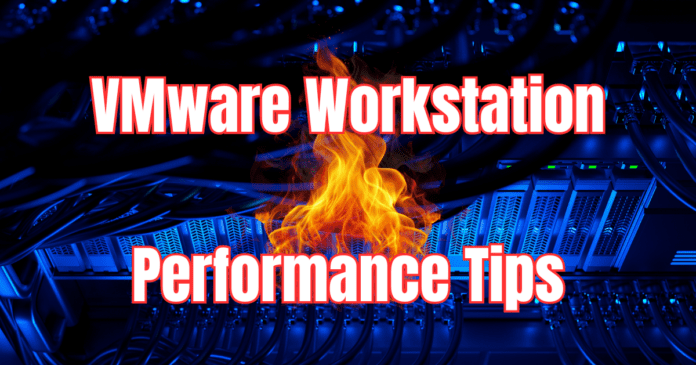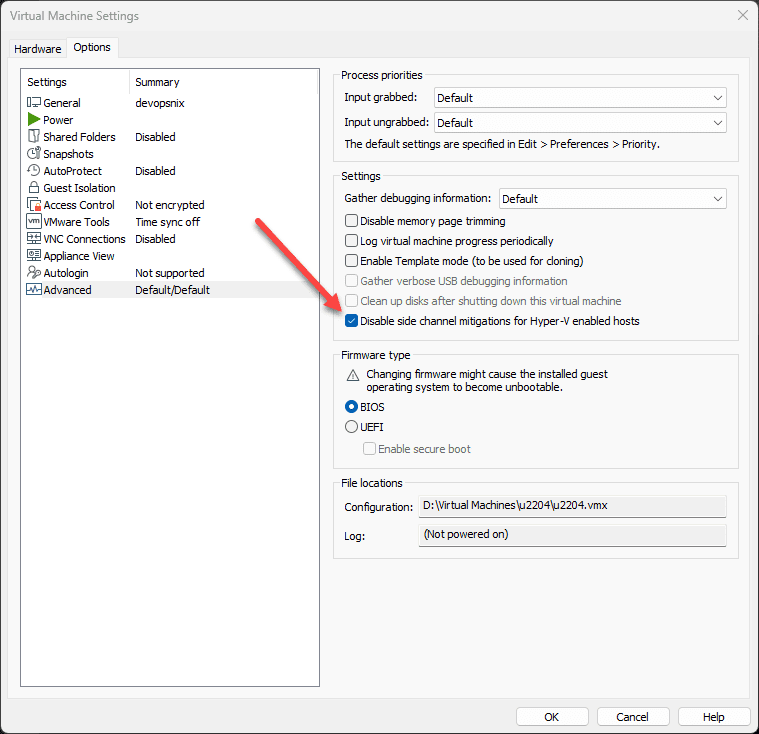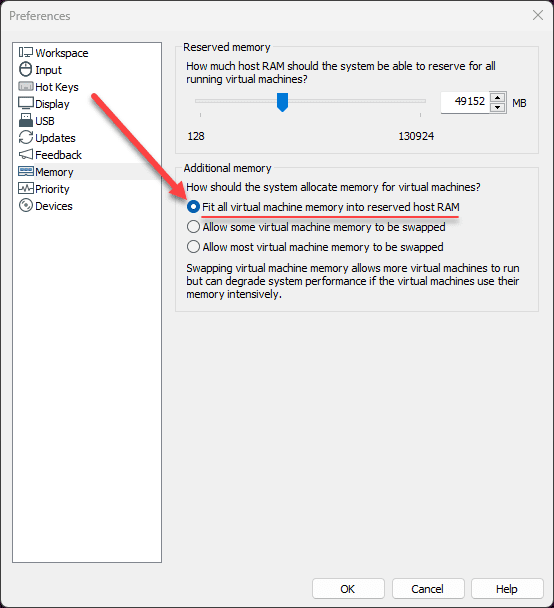If you are like me, you may use VMware Workstation as a daily driver to run virtual machines on your workstation that you may use for development, DevOps, home labbing, or some other purpose. While VMware Workstation performs decently out of the box, I want to show you guys a few VMware Workstation performance tips that can help you squeeze even more performance out of your desktop hypervisor.
Tips for better VMware Workstation performance
There are definitely a few things you can do for better VMware Workstation performance and getting better performance out of the virtual machines you are running on the platform. Let’s look at the following VMware Workstation performance tips:
- Use a dedicated drive for your VMs, preferably NVMe
- Disable side channel mitigations
- Turn off memory swapping
- Exclude your VMs directory from endpoint security
- Upgrade to the latest version of VMware Workstation
- Certain CPUs (hybrid cores) may need workarounds
1. Use a dedicated drive for your VMs, preferably NVMe
If you are running VMware Workstation on your daily driver desktop workstation, it is easy to add an additional drive to house your virtual machines. Dedicating a drive to your VMs eliminates I/O contention between your VMs and the host operating system when these coexist on the same drive.
Also, NVMe drives are super cheap these days. You can an additional NVMe drive to an available M.2 slot and have an easy dedicated storage location for virtual machines.

2. Disable side channel mitigations
VMware Workstation includes side channel mitigations that can be turned on for mitigating security vulnerabilities in today’s modern processors. However, these come with a performance hit. If you want to have the most performance out of your VMware Workstation virtual machines, you will want to disable side channel mitigations for your virtual machines.
The good thing is you can do this in a granular way, disabling for specific VMs that might need more performance and leaving this enabled for VMs that don’t.
3. Turn off memory swapping
This is a little known tweak that will help with performance. By default, VMware Workstation will be set to Allow some virtual machine memory to be swapped. You will find this setting by navigating to Edit > Preferences > Memory.
However, for the best performance, we want to change this to Fit all virtual machine memory into reserved host RAM.
Of course, to set this setting to allow your virtual machines to run in reserved host RAM, you will need to have the physical RAM available on your system to accomodate your virtual machines running in VMware Workstation. This might be worth a RAM upgrade if you have physical slots available for adding RDIMMs, etc.
4. Exclude your VMs directory from endpoint security
It is best practice for performance and stability to exclude your VMs directory you are using for your VMware Workstation virtual machines from scanning by endpoint security solutions. Scanning by endpoint security can result in performance and stability issues.
Creating exclusions for each endpoint security solution may be different and involve different steps. So, you will want to consult your endpoint security vendor to get the correct information for your specific solution you are using.
By using a dedicated drive as mentioned above, it makes it easier to add exclusions since all the data and configuration for your virtual machines will be located in this dedicated location.
5. Upgrade to the latest version of VMware Workstation
With each version of VMware Workstation, there are potentially new performance and stability fixes that come with each new version. Also, the same is true with new Windows or Linux operating systems as these are released and each new version of VMware Workstation generally adds support for the newest operating systems.
This in itself will help with performance and stability by running the newest versions of everything across the board.
6. Certain CPUs (hybrid cores) may need workarounds
There may be another issue. Certain users have reported issues with hybrid core CPUs (performance and efficiency cores). The 12th gen Intel Core i9 processors have been noted to have issues with performance on VMware Workstation.
You may need to disable the efficiency cores when running VMware workstation to try to avoid the issue altogether. Also, some have noted the following improves performance:
powercfg /powerthrottling disable /path "C:\Program Files (x86)\VMware\VMware Workstation\x64\vmware-vmx.exe"Some have also seen success when turning off Hyper-V components on VMware Workstation hosts:
bcdedit /set hypervisorlaunchtype offWrapping up
Like any application and hypervisor, there are definitely settings that can tweak and help with performance. VMware Workstation is no exception to that. The above mentioned tweaks and performance tips can help you to add performance to your virtual machines running inside VMware Workstation and allow you to get better useability with your VMs. However, as with any hypervisor, it often comes down to the hardware of your VMware Workstation host. Dedicating hardware like a separate NVMe drive can have huge performance benefits. Also, the more RAM you have the better, allowing you to do things like fit your VMs in your reserved host RAM which keeps it from paging out.


